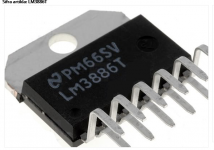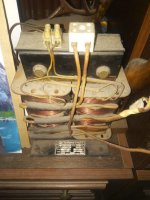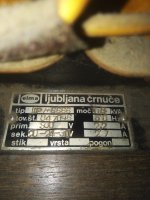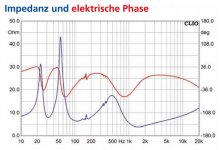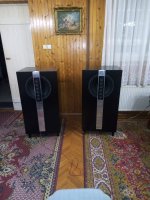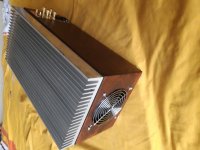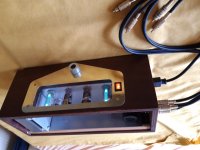Hi guys,
Is it possible to run LM3886 in class A as SE ?
Anyone have any experience with this ? Schematics ?
Is it possible to run LM3886 in class A as SE ?
Anyone have any experience with this ? Schematics ?
A very simple way is to connect to the output and one of the rails a battery of resistors connected in parallel with a total resistance of 8 ohms. Use a reduced supply voltage so that the power dissipation does not exceed the allowable power. Resistors can be replaced with a current source, like Matsura, Pass ... Some suggest using LM317.
Last edited:
A very simple way is to connect to the output and one of the rails a battery of resistors connected in parallel with a total resistance of 8 ohms. Use a reduced supply voltage so that the power dissipation does not exceed the allowable power. Resistors can be replaced with a current source, like Matsura, Pass ... Some suggest using LM317.
Nice, tho its worth mentioning i have 0 amp build knowledge/experience
On left side is input, in middle +-14v are power rails ? And on far right with little circle that are crossed are speaker output right ?
On left side is input, in middle +-14v are power rails ? And on far right with little circle that are crossed are speaker output right ?
Affirmative
If i decide to build lm3886 in such config, will i need a preamp ? I plan on sourcing with pc connected to a fiio k5 pro DAC in lineout mode, which has 2Vrms, here are some stats.
General results FiiO K5 Pro
Channel Center/Summary
Variation in frequency response in band from 100 Hz to 10 kHz, dB -0,09, 0,02
Max voltage output at 0 dBFS, VRMS 1,98
Max voltage output at 0 dBFS, dBV 5,92
Max voltage output at 0 dBFS, dBu 8,14
Harmonic distortion at 0,0 dBFS @ 1 kHz, dB -82,5
Total harmonic distortion at 0,0 dBFS @ 1 kHz, % 0,007519
Harmonic distortion at -3,0 dBFS @ 1 kHz, dB -84,6
Total harmonic distortion at -3,0 dBFS @ 1 kHz, % 0,005869
General results FiiO K5 Pro
Channel Center/Summary
Variation in frequency response in band from 100 Hz to 10 kHz, dB -0,09, 0,02
Max voltage output at 0 dBFS, VRMS 1,98
Max voltage output at 0 dBFS, dBV 5,92
Max voltage output at 0 dBFS, dBu 8,14
Harmonic distortion at 0,0 dBFS @ 1 kHz, dB -82,5
Total harmonic distortion at 0,0 dBFS @ 1 kHz, % 0,007519
Harmonic distortion at -3,0 dBFS @ 1 kHz, dB -84,6
Total harmonic distortion at -3,0 dBFS @ 1 kHz, % 0,005869
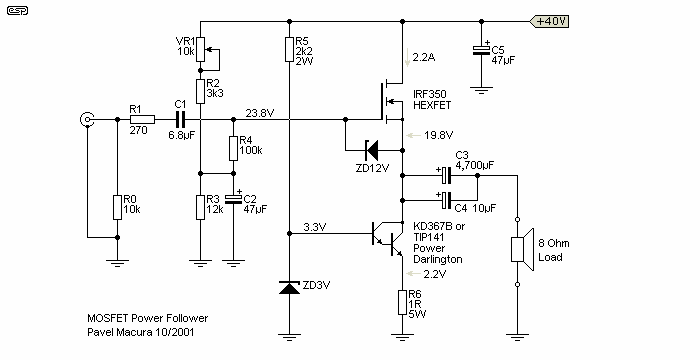
The lower part of the circuit can be used as a current source instead of resistors. This will double the efficiency.
Project 83 - MOSFET Power Follower
25W Class-A Power Amplifier
Last edited:
So.. how do i approach this, i googled for lm3886 class a SE, but nothing came out. Is the first schematic good enough ? Should i ditch the lm3886 and go for something else ?
Have you actually got some 3886’s before you start your plan?
They’re a bit thin on the ground globally right now, so whoever does have handfuls will probably gouge you for them
They’re a bit thin on the ground globally right now, so whoever does have handfuls will probably gouge you for them
There is a local store that have them, around 8$ each.
I also have this huge power trafo,
Prime 380v <> 2.2A
Sec 20-24-30v <> 27A
I also have this huge power trafo,
Prime 380v <> 2.2A
Sec 20-24-30v <> 27A
Attachments
The following class A DIY amplifiers are discussed here: JLH1969, 1996, 2003, Hiraga, SE 4w, A-nirvana, Pass, followers (Macura and Chuffoli). Whether you want to repeat a finished project or start your own is your choice.
You should know that a Class A amplifier is expensive, hot and heavy. It is difficult to obtain a power of more than 10-20 watts. You need to use highly effective speakers.
You should know that a Class A amplifier is expensive, hot and heavy. It is difficult to obtain a power of more than 10-20 watts. You need to use highly effective speakers.
The following class A DIY amplifiers are discussed here: JLH1969, 1996, 2003, Hiraga, SE 4w, A-nirvana, Pass, followers (Macura and Chuffoli). Whether you want to repeat a finished project or start your own is your choice.
You should know that a Class A amplifier is expensive, hot and heavy. It is difficult to obtain a power of more than 10-20 watts. You need to use highly effective speakers.
I understand this.
Regarding power requirement, i would like 10-20w @8R
I have just finished my speaker project, 95db@8R, see pic's for more detail.
Currently connected on Class A SE ECC82 / 6p6s tube amp @ 3.6w, while is more than enough power for daily use, i would like something more, just in case i want it. Also bass volume is bit lacking, i would like something more punchy in terms of bass.
For example, when i first tested on my Kenwood amp class AB @50w, i managed to go to 2/3 before it got soo loud i had to abort it 😀 But i dont like how class AB sounds.
Attachments
It could work in class a, to some extent,as any opamp, depends of max ic dissipation, but that is Not single ended..
So what do you guys suggest ?
If i want class A SE, go with tube pre/power amp.
Or if i want solidstate amp, go with something more conventional ? Some project that OldDIY posted, or maybe some gainclone for LM3886 ?
If i want class A SE, go with tube pre/power amp.
Or if i want solidstate amp, go with something more conventional ? Some project that OldDIY posted, or maybe some gainclone for LM3886 ?
I think i decided to go with SEWA build, a single mosfet class A SE, with tube preamp, kinda best of both worlds 🙂
mosfet class A SE, with tube preamp
Look no further:
the my Inpol / Mofo amplifier
Or dip your toes in the Pass Forum, lots of SE mosfet stuff going on lately. Class A is hot/expensive if you want big watts. Do share your experiments with the LM3886 in Class A, I've always wondered about this myself.
best,
John
A very simple way is to connect to the output and one of the rails a battery of resistors connected in parallel with a total resistance of 8 ohms. Use a reduced supply voltage so that the power dissipation does not exceed the allowable power. Resistors can be replaced with a current source, like Matsura, Pass ... Some suggest using LM317.
It is very neat idea. I used to do it on riaa preamps and line stage.
However, it will not be SE. Internal topology of 3886 is not changed. It will be highly biased classAB.
Logic says no, or at best too impractical, since you start with a Class AB Push Pull amplifier, but some dauntless minds do not let facts and Logic stand in their way, so ....Is it possible to run LM3886 in class A as SE ?
This guy raises the bet: he turns a STEREO TDA**** chipamp into a MONO SINGLE ENDED amp, how´s that?
He also claims some 700W RMS out of a 2 x 15W chipamp, and feeds it from a humble 12V alarm type battery, what´s not to like?
Sheer madness, but watch it for the sheer fun of it 🙄
At least he does not endlessly babble nor use overpowering cheesy Music (except as a demo when amp works driving a "subwoofer") but you can hear Nature in the background (bird chips and the odd chicken now and then)
Warning: images include surgery and dismemberment, including leg amputations.
But no blood or guts visible, thanks God.
And yes, the amp works (sort of 🙄 )
DIY Powerful Ultra Bass Amplifier TDA7297, Simple circuit diagram
DIY Powerful Ultra Bass Amplifier TDA7297, Simple circuit diagram - YouTube
Includes (paid) demo of a nice desoldering pump
EDIT: this guy must be doing things right, just this one video (he has HUNDREDS) has 495,958 views and his Channel "Technical DIY" has 78K subscribers 😱
Last edited:
- Home
- Amplifiers
- Solid State
- Class A SE LM3886
